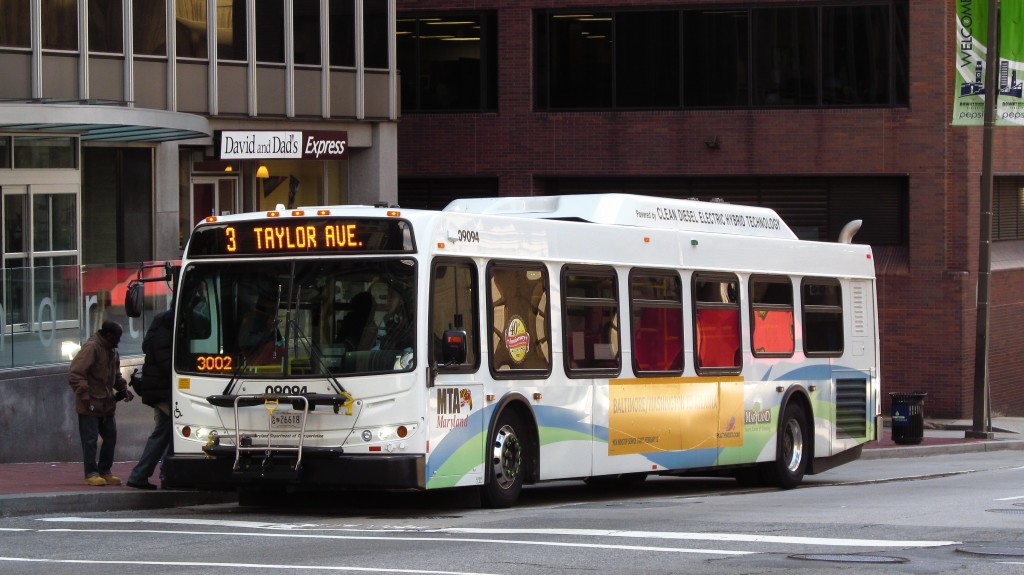Investing in Transit Would Help Baltimore Communities

MTA bus in Baltimore. Photo by ETLamborghini via Creative Commons
Public transportation helps people get to work, school, the grocery store, doctor’s office, and so much more. When it doesn’t work well, people can’t get from point A to point B. What should be simple trips can turn into hours-long affairs.
Research shows that, in many cities, the neighborhoods with the most unpredictable public transit are the same ones where most people are struggling to make ends meet. People who can’t afford a car have a harder time getting and keeping a job if they face long commute times and unreliable transit service.
As the Maryland Transit Authority works to overhaul Baltimore’s transit system this year, it needs to create more reliable and wider-reaching public transit that will support economic growth in previously economically stagnant or distressed neighborhoods. Transit investments can provide much-needed assistance to people who are trying to find work, people with disabilities, and people who are homeless. It would make it easier to reach healthcare and employment opportunities for many city residents.
While just about all Baltimore residents live near some sort of public transit, those options are often times not viable. For example, fewer than half live near high-frequency public transit routes. MTA is working to refine a plan Gov. Larry Hogan put forward last year after canceling the planned Red Line light rail project. MTA should use this opportunity to create better connections and improve the lines of transit already in place to more efficiently connect residents to jobs, schools, medical care, and stores.
When MTA first released its plan last fall the Authority planned to eliminate service to Greenmount Avenue south of 39th Street. This posed significant problems for regular bus riders who rely on those stops to connect to the light rail or subway. After feedback from customers and local legislators, MTA agreed to redraft its plan and present it in formal public hearings. These types of problems are representative of Baltimore’s transit issues. There are subway and light rail lines that run in sections of town where the bus routes that help connect a majority of people to them are infrequent and unreliable. And often the light rail and subway stops do not connect to each other.
It is clear that Baltimore will benefit from increased investment in its transit network, but only if the new bus routes are able to get people where they need to go in an efficient manner. Cooperation among MTA, residents, and area legislators is necessary so Baltimore residents that rely on buses to get around have access to new opportunities.
MTA and legislators should maintain an open dialogue with Baltimore residents about what the community wants and needs from its transit services. If the restructuring is successful Baltimore and its residents should see widespread, long-term economic growth that would help build better lives for themselves and their families.
